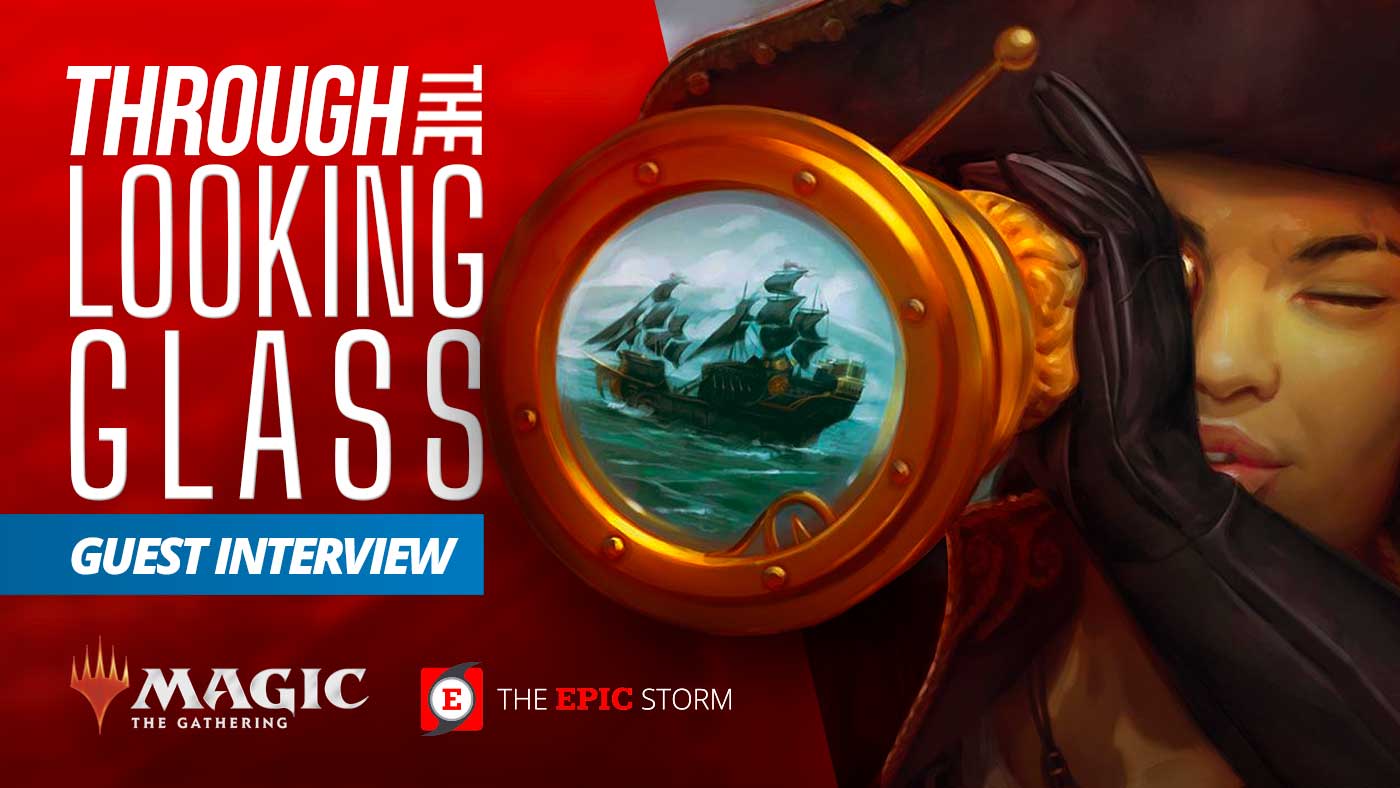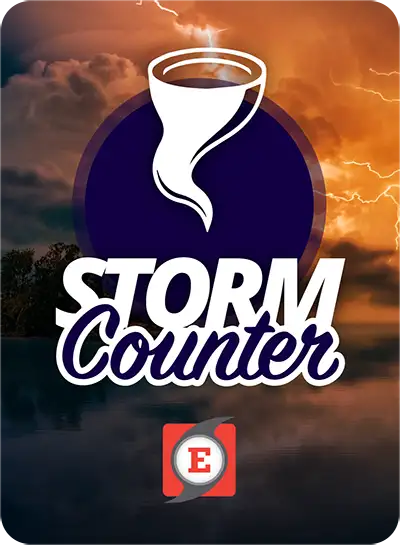
Special Guest
A few words on Lawrence Harmon (@LawrenceHarmon on Twitter):
He is known for frequenting the MODO Legacy queues with various Brainstorm shells. Known as the progenitor of Accumulated Knowledge Miracles, he loves tuning and finding edges in deck building.
Lawrence does some occasional writing about various formats at thirstforknowledge.home.blog
I think the more recent lists are definitely more coherent and powerful. The lists that were trying to leverage Search For Azcanta were often trying to implement a “true control” game plan with only 3 Jace, the Mind Sculptor and 1 Entreat the Angels as win conditions. Playing true control in Eternal formats can be a risky ordeal because there’s a lot that can go wrong. Sometimes answers don’t line up, other times you hit match-ups where you need to force open a window to present a quick clock and capitalize on it. The “draw-go” lists just don’t facilitate this.
I’ve also had multiple friends show me screenshots of themselves winning the game with less than 7 cards in their deck against an opponent who has around 30 cards left in their deck. Which left me feeling that something was wrong if you needed to draw 90% of your deck in order to beat 50% of the opponents.
Soothsaying was an odd card to evaluate. It’s VERY good in the mid-to-late game when you need mana sinks but its pretty terrible in the early game. To my knowledge, the only player who had consistent results with the card was SteFaNoGs. My experience testing the card was pretty negative, but I didn’t try the card in conjunction with Predict which likely makes it worse so maybe I have the wrong impression.
Force of Negation is pretty solid. There’s a decent number of matchups where having a 5th or 6th Force of Will is very crucial. Having a copy or two spread between the main deck and sideboard is completely acceptable depending on the metagame. I’d generally default to playing them in the sideboard assuming an open field but if the expected meta is ripe with combo then I’d hedge with a copy or two in the main. Against Storm, I think the card is potentially better than Force of Will because it can exile Past in Flames.
Counterbalance is an odd card to evaluate. It’s been a sacred cow of Miracles shells for as long as I’ve played the deck, but it’s ultimately a high variance effect that I kinda hate playing. It’s great in the games where you get a couple of lucky blind flips and are able to maneuver into a spot where you can start using your cantrips to Predictively counter the best possible or most likely plays from the opponent. The flip side is there are a good number of times where it just shows both you and your opponent whatever card you’re going to draw next as you lose on board. Since the banning of Sensei’s Divining Top, Miracles pilots have been looking for reasons to cut Counterbalance wholesale, and some have looked at Narset, Parter of Veils as a replacement.
Accumulated Knowledge is still a solid draw engine in most matchups, but is a liability against the various Narset, Parter of Veils decks that are floating around. The card is far and away better than both Predict and Search For Azcanta against combo shells. Search For Azcanta forces you to tap low in the early game in order to get your draw engine online. Predict forces you to cantrip oddly to maximize it. So… in positions where you Ponder and see 3 medium cards with Accumulated Knowledge you’d likely shuffle but with Predict you may end up keeping it instead of maximizing finding important interactive cards. Having Accumulated Knowledge in your deck allows you to spend the early turns prioritizing finding relevant spells to impede combo opponents while having something to do with your mana if they don’t force you to do anything. You’re ensured long-term inevitability without having to put yourself in a major risk of losing.
I don’t think the card is that great. TES is much less reliant on cantrips than ANT and will commonly cast two to three before Narset, Parter of Veils can come down. With only eight cantrips in the deck, it’s just not the most relevant thing to be doing. For this reason, I tend to either not board in Pyroblast effects against TES or when I do I’ll only bring in a couple of copies compared to ANT where I think having two to three is acceptable. Part of this is because ANT will spend more time cantripping for its relevant cards meaning the critical turn is often between turns four and eight whereas TES generally wants to kill Miracles on turns one through three. The major upside for Narset, Parter of Veils is that she cuts off lines where a TES pilot could try to leverage Echo of Eons, but ultimately I think she’s a bit too awkward to resolve. If a Miracles player has Accumulated Knowledge or Predict in their deck I could see shaving some number of Narset, Parter of Veils but I’ve also seen a lot of players opt to cut Accumulated Knowledge for more Narset, Parter of Veils heavy lists and in those cases It’s correct to leave her in because you need some effect to pull you ahead.
This one is kind of harder to evaluate. I think TES doesn’t really want to get to turn four against Miracles and the best hands against Miracles are the ones that involve an early kill. My concern is that having both Defense Grid and Hope of Ghirapur dilutes your deck of relevant effects more than it means adding threatening cards. The other way to look at them is “must Force effects” which in a way increases your Duress count in a way. The downside of playing both is that your Miracles opponent is now incentivized to board in some number if Disenchant effects. These would normally be pretty terrible but having but having Defense Grid, Hope of Ghirapur, Chrome Mox, and sometimes Mox Opals to destroy, Disenchant becomes significantly easier to convert which decreases the opportunity cost of boarding in a narrow effect much lower.
With that said, these effects are very scary in the abstract, and I could see how a turn one Rite of Flame into Defense Grid being what the deck needs to swing the match-up. If your opponent Force of Wills it then you’re still trading two cards for two cards and will likely still have an Infernal Tutor, Burning Wish, or another relevant payoff effect left over to win with. Notably, my win rate against Defense Grid/City of Solitude effects is much higher than my win rate against “Swarm effects.”
I’ve never really been worried about the early game Burning Wish, to be honest. The short list of effects that TES has played that incentivize making this play have generally been some “grindy” effect — Past in Flames, Echo of Eons, Mizzix’s Mastery, Dark Petition, or discard. All of which are fairly easy to account for as the game goes on.
If I do counter an early Burning Wish it’s often because I have Surgical Extraction ready to cut my opponent off of Tendrils of Agony lines (unless they’ve boarded the card in), which they generally don’t do. Otherwise, Surgical Extraction is generally to gain random percentage points by snagging Rite of Flame or discard spells so I can sit back on a stack of countermagic. The other option is Infernal Tutor to make the deck a little less consistent.
Echo of Eons is an interesting card that can definitely swing the game in your favor if you’re able to sneak it through. The issue is that it’s weak to Pyroblast effects and Narset, Parter of Veils and gets worse if your opponent is playing four copies of Force of Will and some number of Force of Negation since you can “Wheel” them into relevant interaction. It could be good within a turn where you have an excess of mana, can get your Miracles opponent to tap-out, and then Echo of Eons. There’s also Hope of Ghirapur if they don’t have a Force of Will for it but I’m inclined to think that it’s best to avoid leaning heavily on Echo of Eons unless you have a Defense Grid in play.
Pretty much the same as Narset, Parter of Veils. Against TES I slant my deck for early game interaction because the deck isn’t that good at rebuilding after you stop it from going off. Back to Basics is much better against ANT where they can often set up a turn where they try to go off that drains you of your resources and then kill you on the following turn by utilizing Past in Flames. Back to Basics can be a relevant choke in their mana so you have a few turns to find action.
I think the Grinding Station plan out of ANT is great against Miracles pilots who aren’t experienced against it. I don’t think TES has enough slots in deck construction to facilitate it, and this angle of attack really falls short without access to multiple copies of Cabal Ritual due to its mana intensive nature. The ultimate issue with Grinding Station is that for experienced players it’s easy to see from a mile away and lines can be taken to invalidate it. Plays such as getting early Snapcaster Mage and Vendilion Cliques into play to pressure the Storm pilot, having multiple copies of Counterbalance in play, or holding a fetchland so you can fetch, maintain priority, then counter the original Tendrils of Agony and then Surgical Extraction it before your opponent can cast their second copy shut the plan down. In the end, you just need to be able to sniff out what level your opponent is operating on and adjust accordingly.
Against ANT I’ll usually leave in a couple Sweepers (Engineered Explosives/Terminus) to answer Empty the Warrens. Against TES I usually like having three to all four copies. Both decks can implement a plan where they do an early Empty the Warrens for 8+ Goblins to force you to find a sweeper, hit you a couple of times then kill you with a mini-Tendrils of Agony because you’re likely tapped low on countermagic from having to cantrip for a sweeper. I don’t worry about this plan from ANT as much but I still respect it whereas TES is built in a manner that better facilitates a faster Empty the Warrens.
Regarding cards like Hope of Ghirapur/Xantid Swarm if possible I will leave in some sort of spot removal. This isn’t the most common plan as a lot of Miracles pilots prefer to leave in Monastery Mentor against combo shells. I, on the other hand, tend to play 2 copies of Vendilion Clique in my sideboard and lean towards playing more of a “draw-go” game where I kill my opponents with flash threats. My plan better facilitates having a suite of white removal spells since I’m not forced into tapping low on mana for a win condition I’m afforded the option to hedge my bets a bit more. Most Miracles pilots opt to leave in no interaction for creatures in order to have Monastery Mentor post-board.
There isn’t really a difference in the cards, to be honest. If I see Defense Grid and assume Xantid Swarm/Hope of Ghirapur I may be inclined to have some number of Disenchant in my deck instead of Swords to Plowshares but otherwise I don’t care about one or the other more.
I touched on this a bit earlier. Pyroblast isn’t really that great against TES because the windows where you can cast it are fairly slim.
Surgical Extraction‘s application differs vastly against TES than it is against ANT. Against ANT, I will commonly hold Surgical Extraction in hand for as long as possible because often a single copy can keep your opponent from taking a lethal Past in Flames line. Against TES, I usually try to Counterspell and Surgical Extraction targeting Burning Wish to cut my opponent off of Tendrils of Agony/Grapeshot meaning I only really have to worry about beating any copies of Empty the Warrens that are in the deck. It becomes more of an aggressive crippling effect as opposed to a defensive effect.
One of the most interesting aspects of TES is that it minimizes the “grindy” elements that other Storm shells have tried to leverage. Doing so has allowed the deck to maximize its payoff effects like no other. On multiple occasions I’ve watched TES players take likes where they cast Ad Nauseam with only 1 or 0 mana floating and easily leverage that into a kill. While this aspect of the deck makes it much faster it can also prove to be a liability if their “ritual effects” are properly choked. A Spell Pierce or Flusterstorm on a Dark Ritual or a Rite of Flame can cause the 1-2 mana deficit that will keep your opponent from going off. Also, be aware of what mana they have floating, as TES has two color requirements that it has to meet. Black mana for Infernal Tutor, Ad Nauseam, and Tendrils of Agony and red mana to properly utilize Burning Wish, Grapeshot, and Empty the Warrens. Often times choking them off of one color will keep their deck from operating properly.
One final note, Jarvis Yu is streaming this month in support of the American Cancer Society. Please go support his stream here (follow, donate, subscribe, etc.)
I would like to take a moment to thank Lawrence Harmon for joining Through the Looking Glass and providing some wonderful responses on the Miracles versus The EPIC Storm match-up.
Until next time, keep storming!










